The auditorium at Hongqiao is rarely quiet, and is often alive with either musical, dramatic performance, or one the many rehearsals it takes to prepare beforehand. Each year, the Middle School holds a number of performances, including plays and musicals, in both Chinese and English language. These performances are a much-anticipated highlight of the school year, where students can both come together as a team and shine as individuals.
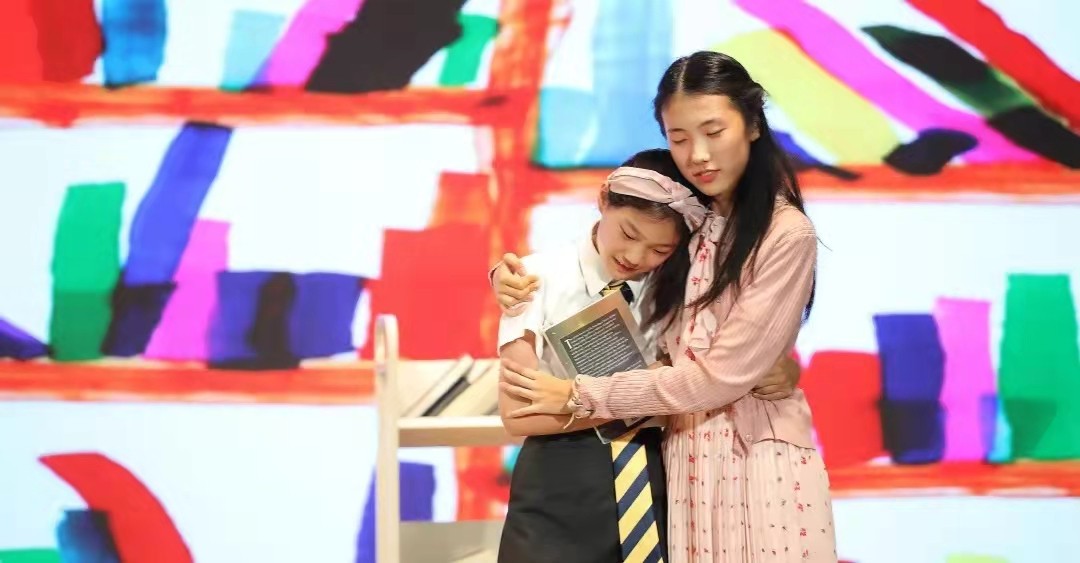

Peter and the Starcatcher comes to Hongqiao
In February, the long-awaited performances of Peter and the Starcatcher came to Hongqiao campus. The play, which is a prequel to Peter Pan, tells the story of how Peter found a family with the Lost Boys in Neverland. Directed by Middle School Music and Drama teachers Madison Auch and Michael Jorgensen, the play was chosen for its themes about finding wonder and magic, alongside its wide array of interesting and diverse characters – which included sailors, mermaids, and pirates – which allowed everyone to have a significant part. In total, 55 students were involved in the production, with 23 actors, 8 production team members, and 24 tech designers, who designed the set, props, lighting, sound, and costumes.
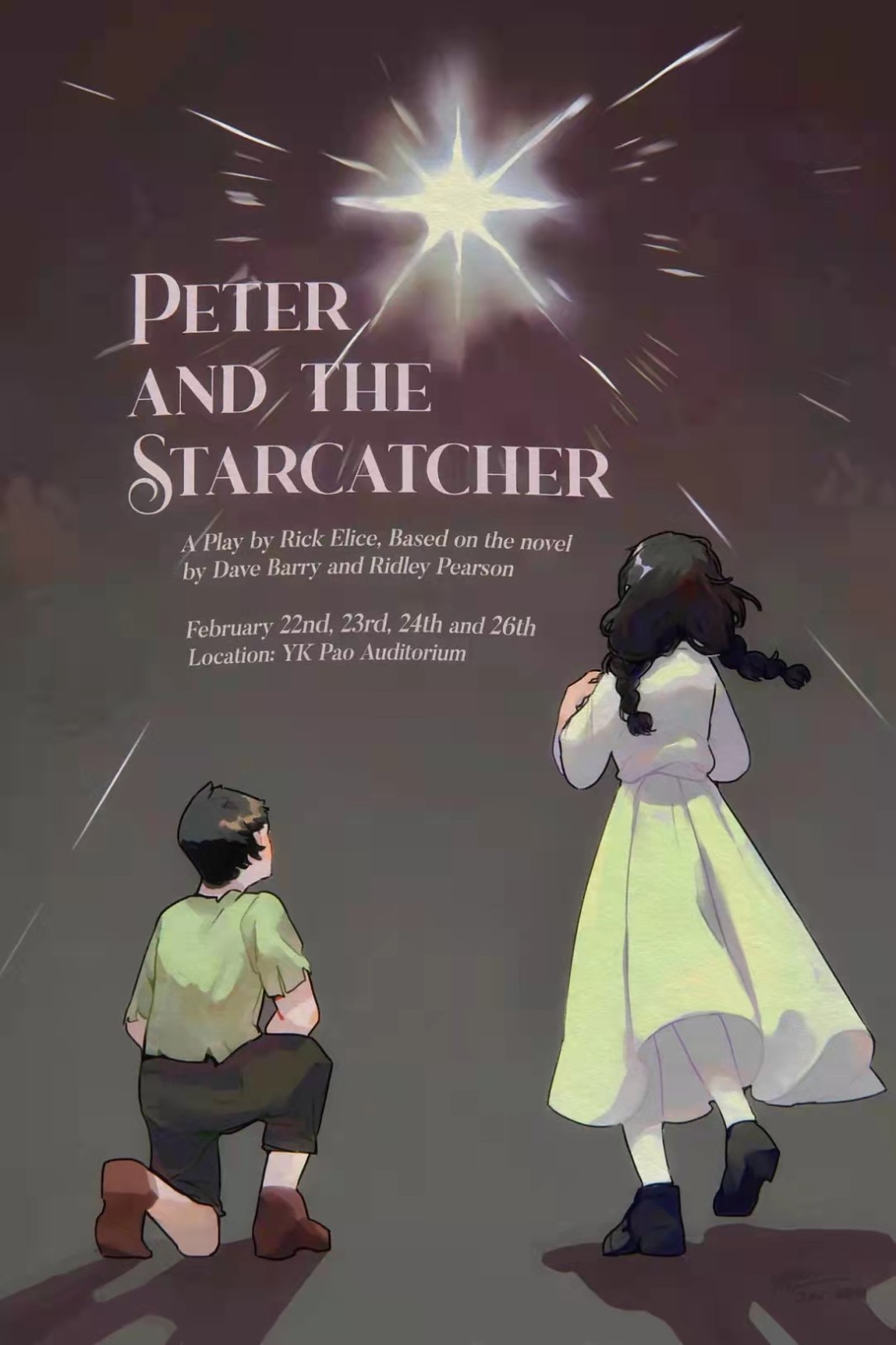
Even though the audience only sees the end performance, the students and teachers put in five months of hard work in preparation for the spectacle. The play began preparation in the second week of school, with one design meeting and three actor/production team meeting each week in CCA time.
Early in the process, the cast of the performance each auditioned for their roles by reading a minute-long scene from the show. Once the characters were cast, the group did a read-through of the play and then begin the slow process of working through a scene at a time. This is a normal aspect in preparing a performance, explains Ms. Madison, “A moment that may only last 30 seconds on stage can take hours to plan and coordinate, from making sure everyone knows where they enter and exit from, which props they are bringing in, where they should stand, and so on.”
While the actors are preparing for the play, there are a number of other essential roles to fulfil, such as the production team and designers for costumes, lighting, sound, props, and the set. To begin with, the designers read through the script together and started to look at the design needs for the production before beginning the building process, thinking about a variety of aspects such as: Which props are mentioned? What locations do we need to represent in the set? Where are the moments that we can reveal something with the lighting? How might the costumes look for this scene?
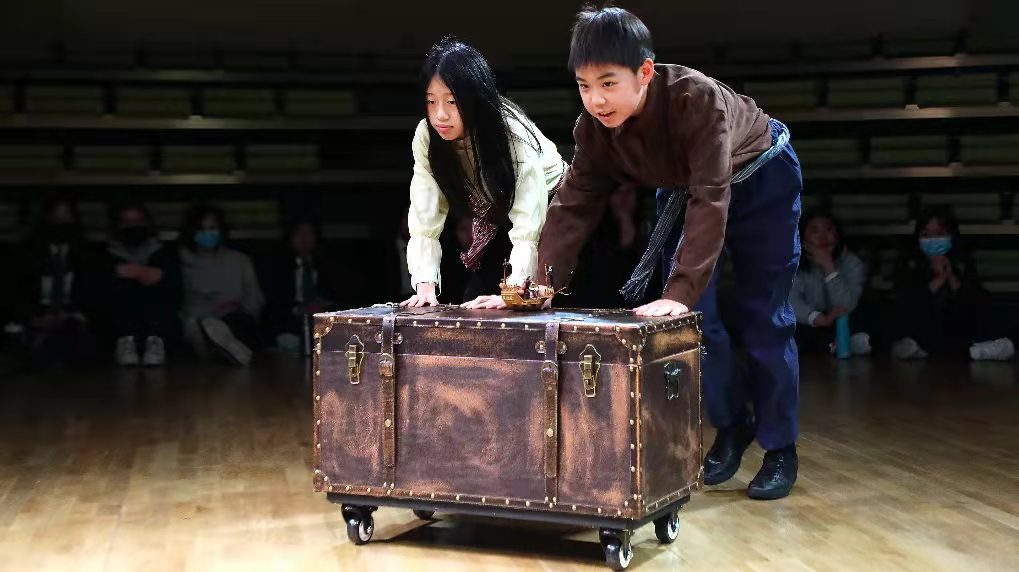
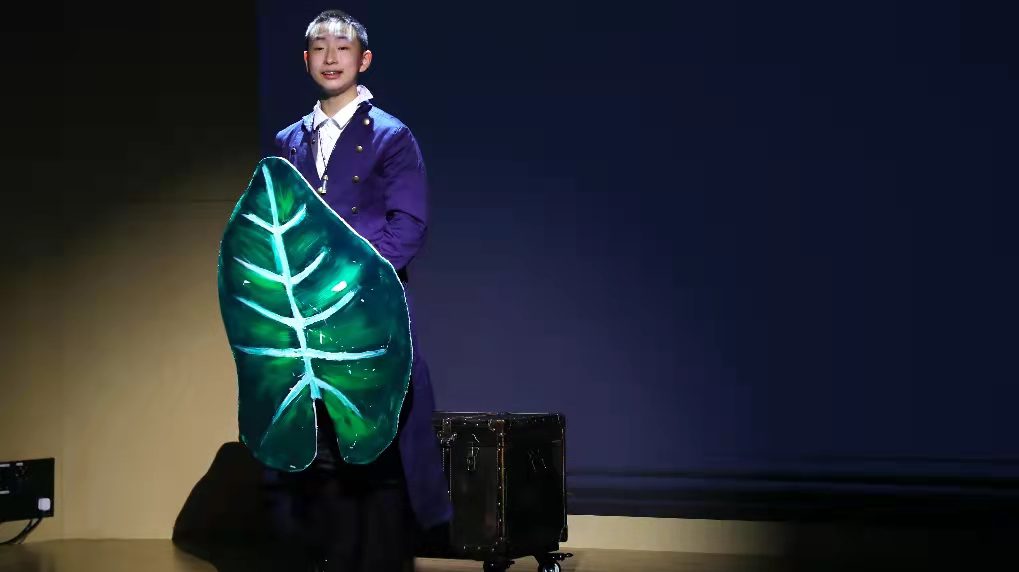
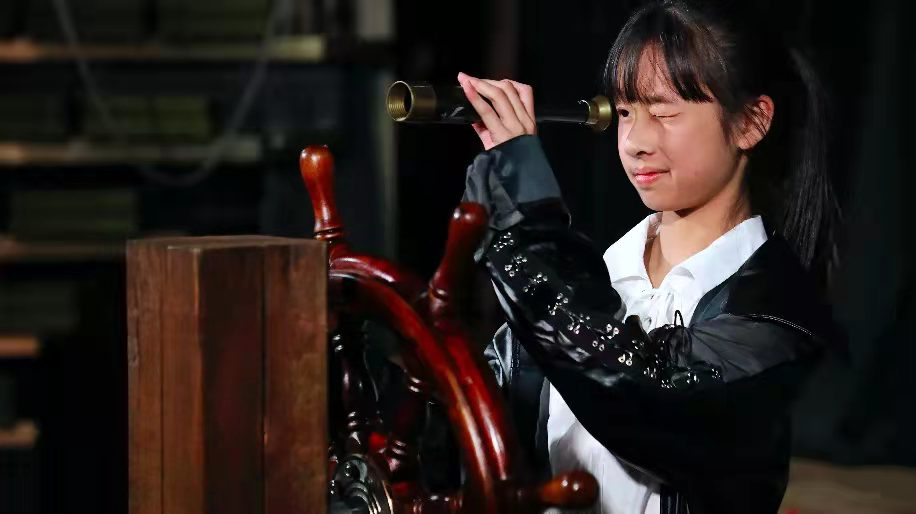
In the end, the student set designers were responsible for creating/painting 15 Mollusk shields, 12 Mollusk armour plates, 11 mermaid tails, 6 double-sided floor pieces, 2 hand-drawn maps, and 1 giant sparkling golden parachute. During the production, the light board had over 100 cues and was entirely operated by students on the production team with the support of Mr. Jorgensen. In the preparation process, the students were given invaluable support by Danny Nolen, a professional lighting designer, who helped them program the light board.
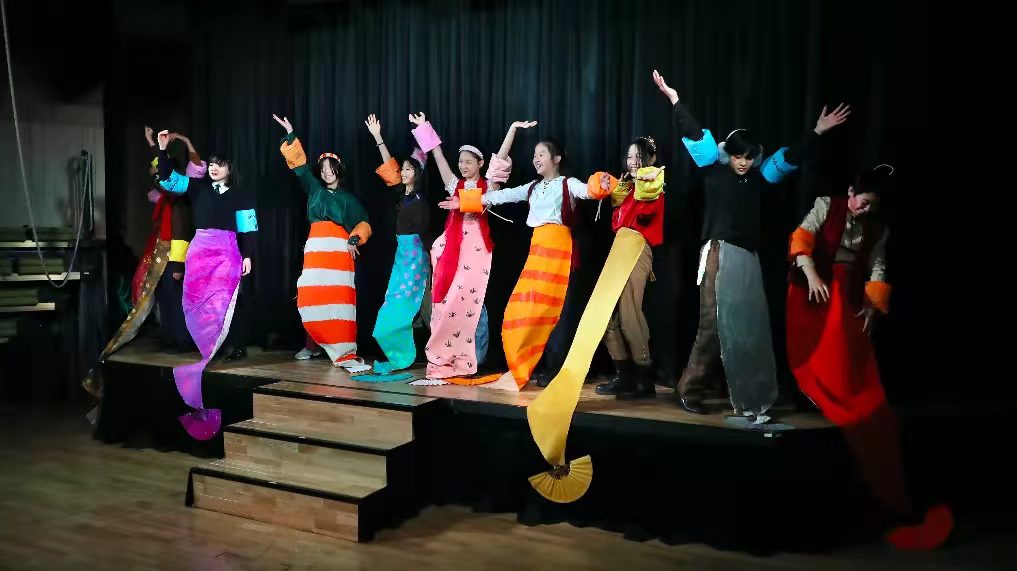
Additionally, the production team backstage worked as assistant stage managers to make sure that props were in the correct places for each show, ensuring that the actors are where they need to be, and problem-solving anything that might come up. One particularly impressive feat was the work involved in Mr. Grin, a giant crocodile puppet, which was the Middle School’s largest puppet to date and was operated by 5 students with no previous puppetry experience. Impressively, the puppet was produced after extra work by the teachers, taking around 40 hours to construct!

“This is the longest and most complicated production we have done at the middle school since I got here, with more moving pieces, changing roles, and student-designed tech than anything we have done before.” Says Ms. Madison, who adds that it was further complicated as, for the four weeks before our show opened, the students were not able to have an in-person rehearsal. Though the challenge seemed insurmountable, the efforts of the cast and crew paid off and was enjoyed by a 500+ audience of staff, students and selected parents over four performance dates.
The ones who make the story possible…
With every single rehearsal, I felt the confidence rise within me and I felt more excited,
as if it was finally happening. When we had our final dress rehearsals, even looking
at the empty seats made me feel excited, because I felt this was going to be one of
the best shows I have ever had the pleasure to take part in.
— Mike (Y8)
Mike, who played the lead character Peter, had a lot on his plate. Although he has participated in every drama performance possible since joining Pao School, Peter and the Starcatcher was more ambitious than previous productions – with a great number of lines to remember. As lead actor, Mike had little time to rest between scenes and felt the pressure to make sure everything was almost perfect and that every movement is meaningful.
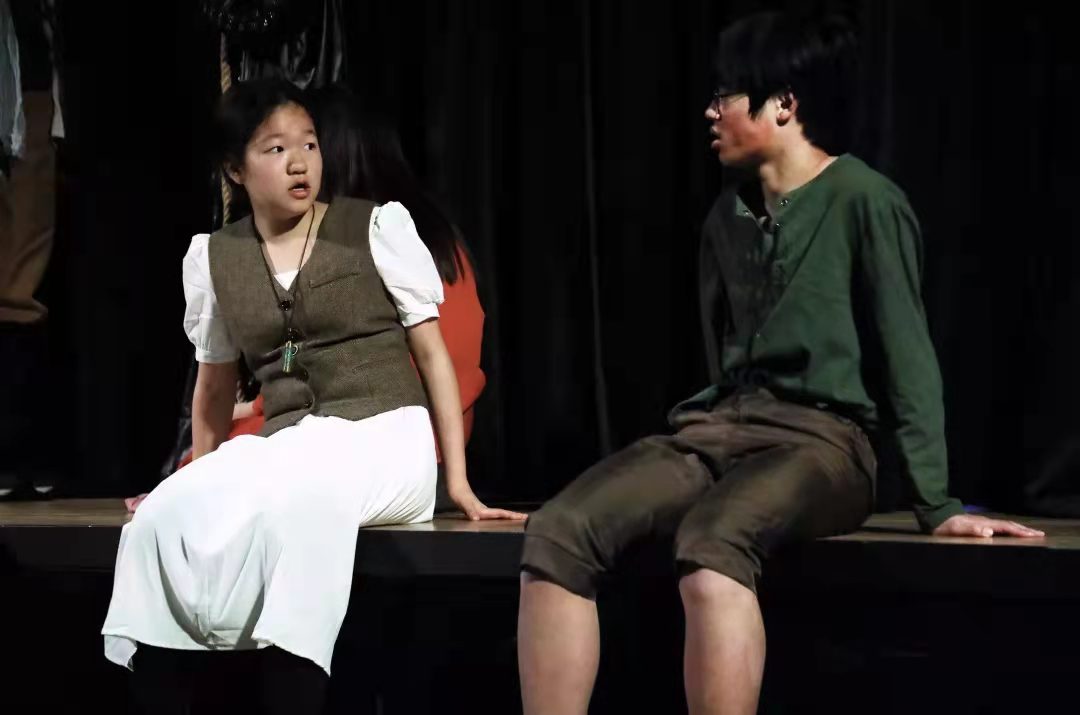
Mike also noted challenges in the rehearsal process, in particular a scene where Peter is running through the jungle alongside narration. He often thought that, as people often forgot their lines, it would be impossible to prepare well enough for the play in time. However, despite the odds, Mike says, “During the last few full run rehearsals we managed to get the scene working, I could see the determination in everyone’s eyes, and I knew that they had worked hard to get everything together.”
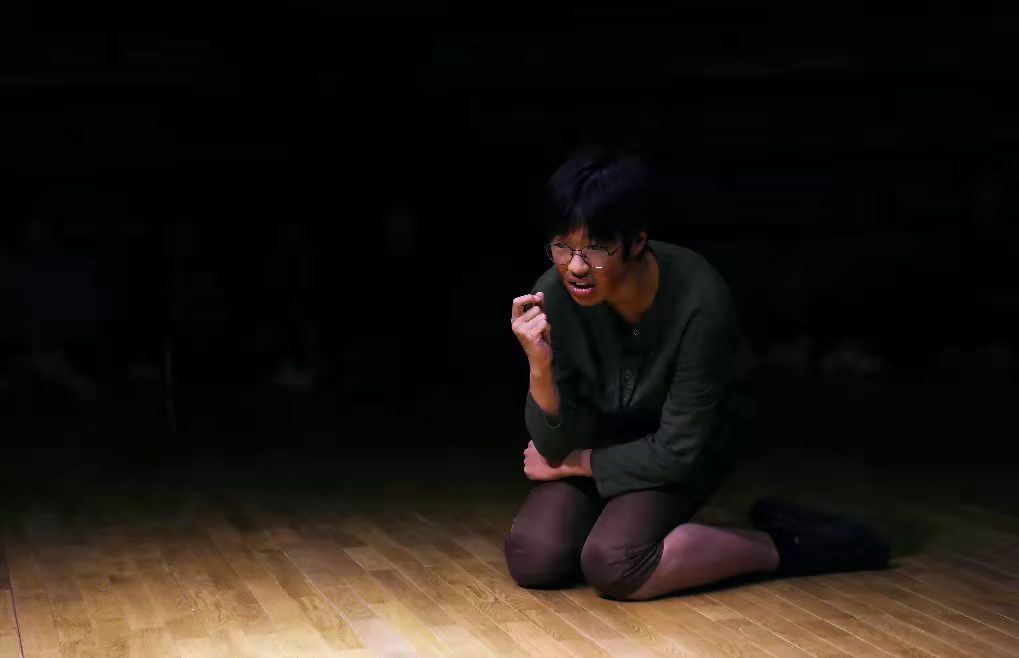
Jane (Y8), who took on the character of the play, Black Stache. Her character eventually evolves into the infamous antagonist of the Peter Pan story – Captain Hook. As part of her role, she had to learn to speak, walk and behave like a pirate. In the past, she has acted in various productions with the school, including The Odyssey and Matilda, and will serve as an assistant director for the upcoming musical Shrek.
“I have always loved the antagonists of the stories because they are the ones who are ruining the perfect plan, breaking others’ hearts, and really are the ones who make the story possible,” says Jane, who was excited about playing such an important character in the story. It is something that she will never forget, alongside the strong friendships she has built with her Peter and the Starcatcher castmates.
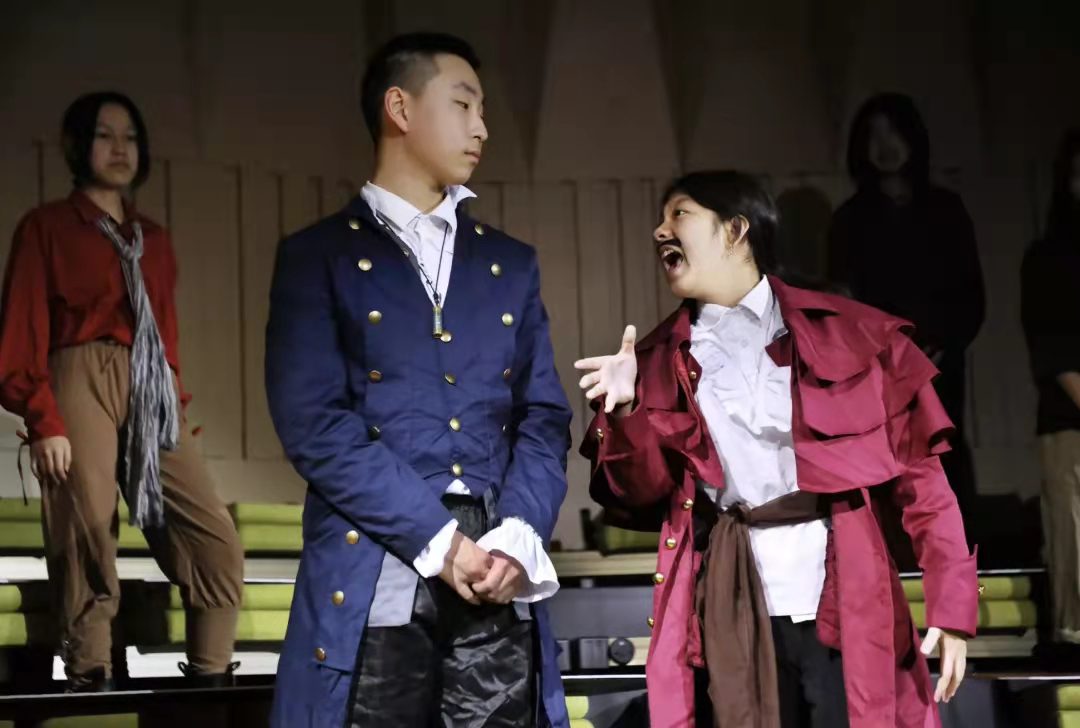
These strong friendships came from the many hours the students spent together perfecting and practising the play, which were essential as there were many intricate scenes that could easily go wrong. For some scenes due to the complexity of making sure their lines did not overlap, they have to memorise their lines. Bobo (Y7), took on the role of comic relief in the play in his turn as Ted, a friend of the main character, says, “Acting is a lot more about cooperation than it seems, if someone else on stage messes up, you have to cooperate with them to try to save the scene.”
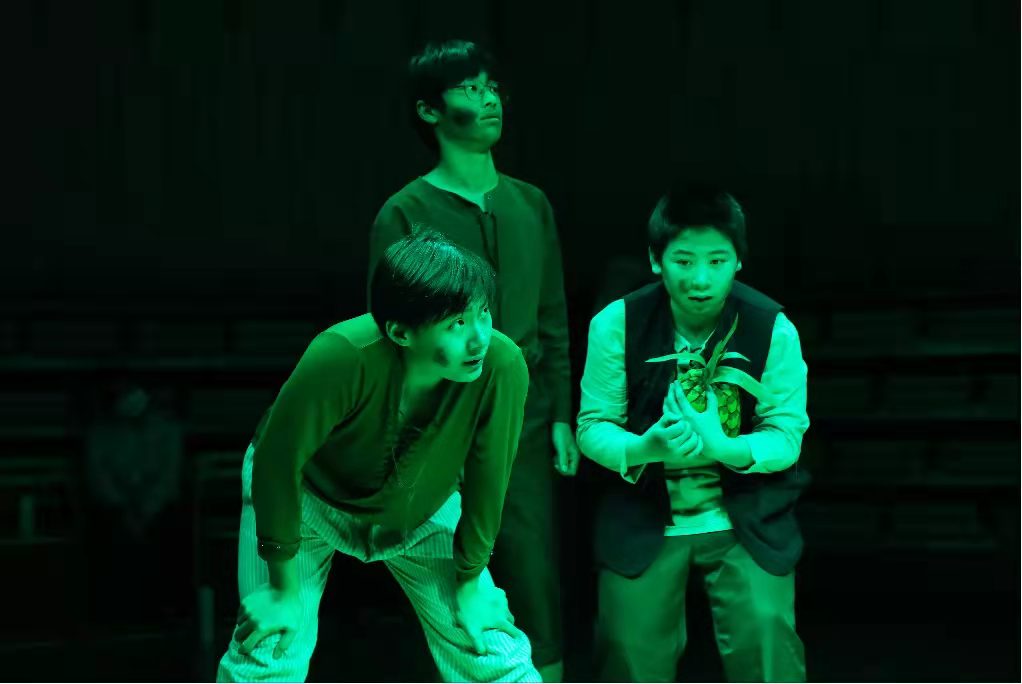
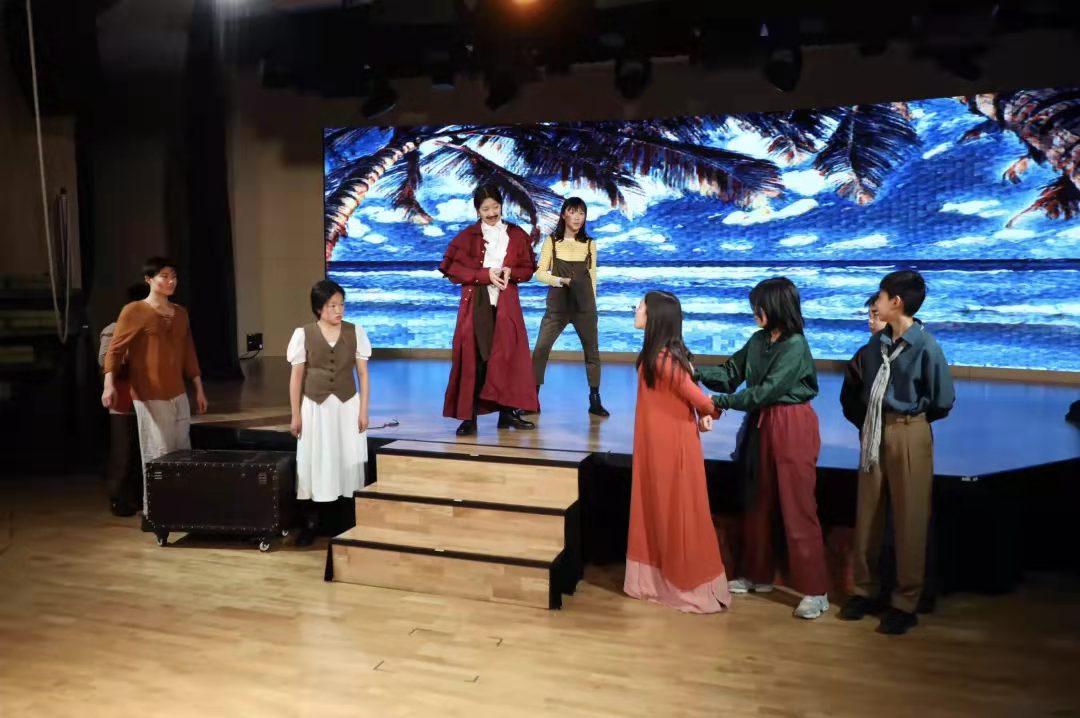
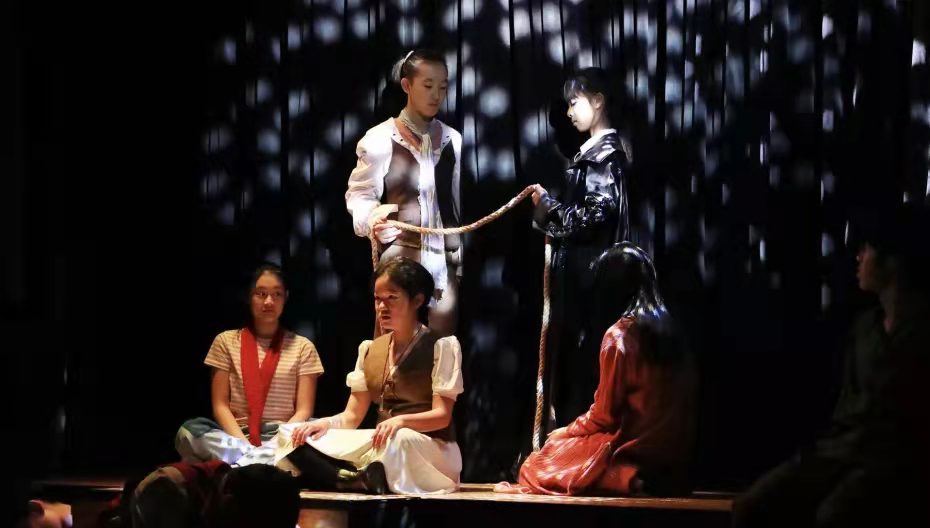
Alongside the actors, dozens of backstage crew members were essential in making the production possible. David (Y8), an assistant director and stage manager, helped with such things as creating costumes and preparing the staging/props. He notes that though it was a pleasant experience, it was also stressful. This is as, during part the rehearsal period, the students had to go onto online learning, which limited in-person rehearsals. Instead, the actors and crew would run through lines together remotely, with the assistant directors listening in to check the script or step in for actors who were absent.
Another crew member, Joey Zhang (Y8), wore many hats for her position as Assistant Stage Manager, including light design and helping with special effects make-up for the performance. This was her first time in a drama production but chose to get involved as last year’s musical, Matilda, had left a deep impression on her.
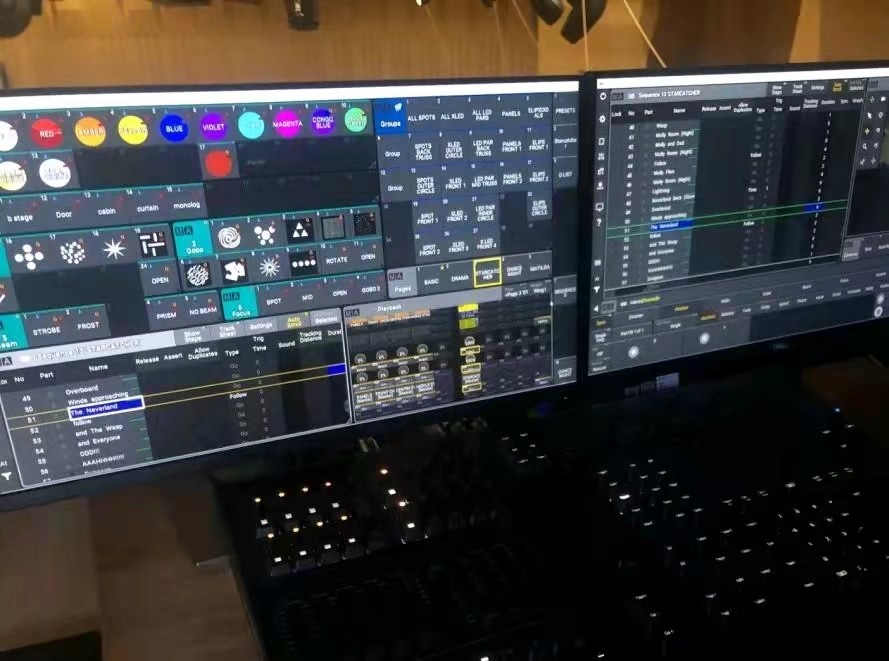
The light board Joey worked from
She also got an important insight into life backstage, by learning more about the process of creating a play and was moved by her crewmate’s enthusiasm. Joey also encountered challenges in her role as a lighting director. On the first day of the performance, some of the lights suddenly did not respond. It was the teachers, Joey says, that helped save the day and ensured that the following performances went smoothly. “I found the process very inclusive, everyone with different talents and interests could contribute,” Joey explains.
I've been so amazed at the level of enthusiasm the students at Pao School have for drama. Not only are they stepping up and demonstrating confidence, bravery, and vulnerability through their acting, but are exploring avenues of creativity and leadership as designers and assistant directors as well. Drama is such an important way for young people to learn how to express themselves clearly and confidently, how to calm their nerves and speak in front of large groups of people, and how to Empathise and understand the emotions of someone other than themselves.
——Madison Auch
Middle School Music and Drama Teacher
“The Classic of Mountains and Seas”
In addition to English productions, Pao School also puts on high-quality Chinese language performances. Recently, students on the Hongqiao campus performed a musical which highlighted selections from the ancient Chinese text "The Classic of Mountains and Seas”, a fabulous geographical and cultural account of pre-Qin China as well as a collection of Chinese myths. In the story we see traditional Chinese culture, as featured in "The Classic of Mountains and Seas," clash with the lives of children in today’s world. It also illustrates the academic pressure children feel in modern times, whilst reflecting on how to educate children so that they grow up to be confident and happy.
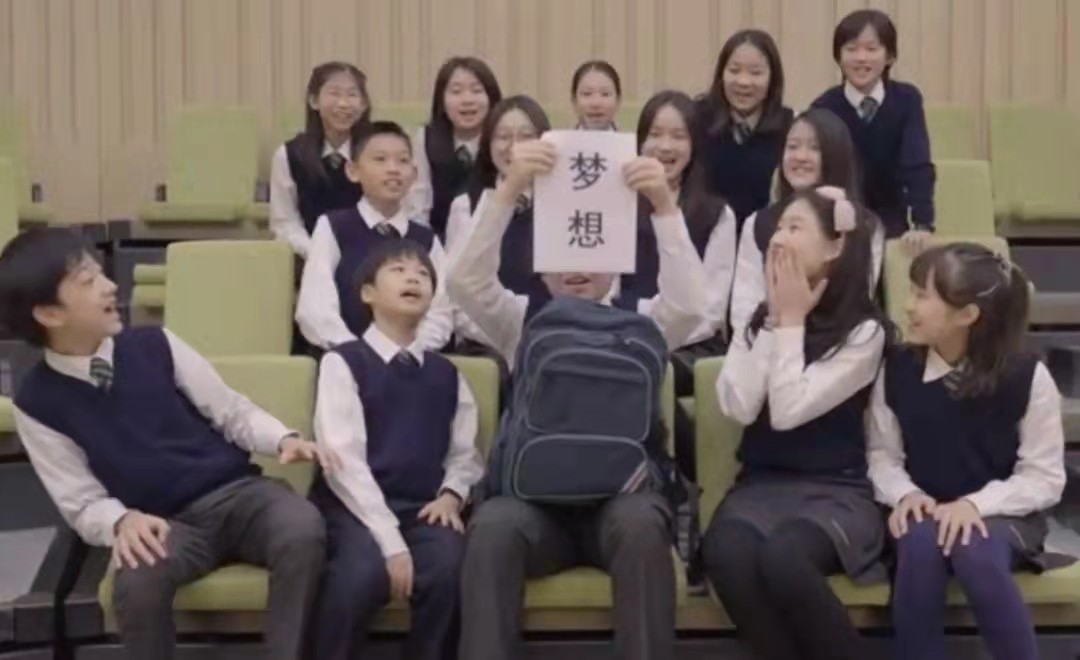
Scenes from promotional video featuring
“The Classic of Mountains and Seas”
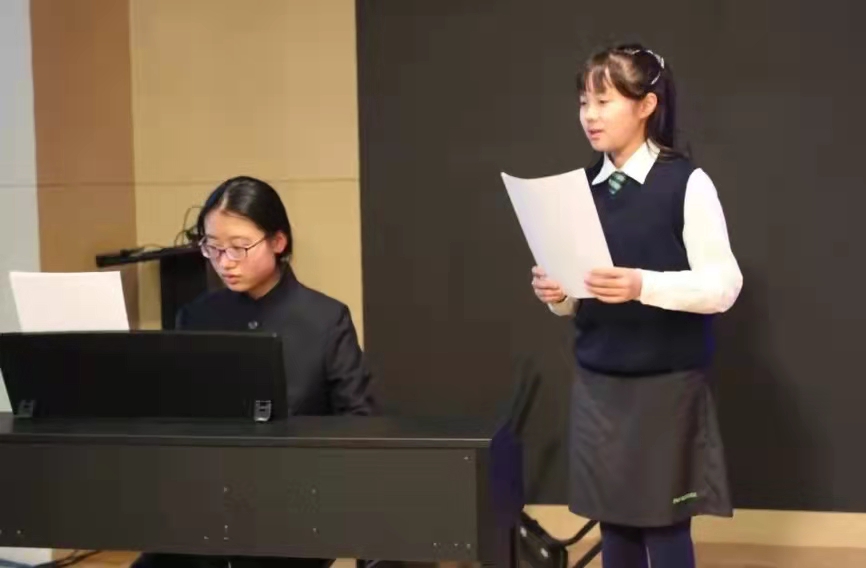

Students working on rehearsals
The main creative team invited all interested Middle School students to participate in the production. This ensured that students with different talents had a chance to shine, whether in story creation, publicity, creative design or playing musical accompaniment. Currently, the creative team is preparing intensively. The overall creative process of this play illustrates Pao School’s concept of whole-person education and its focus on cultivating bicultural talents well-grounded in traditional Chinese culture with an international perspective.